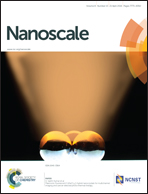Mechanism for excitation-dependent photoluminescence from graphene quantum dots and other graphene oxide derivates: consensus, debates and challenges
Abstract
Luminescent nanomaterials, with wide applications in biosensing, bioimaging, illumination and display techniques, have been consistently garnering enormous research attention. In particular, those with wavelength-controllable emissions could be highly beneficial. Carbon nanostructures, including graphene quantum dots (GQDs) and other graphene oxide derivates (GODs), with excitation-dependent photoluminescence (PL), which means their fluorescence color could be tuned simply by changing the excitation wavelength, have attracted lots of interest. However the intrinsic mechanism for the excitation-dependent PL is still obscure and fiercely debated presently. In this review, we attempt to summarize the latest efforts to explore the mechanism, including the quantum confinement effect, surface traps model, giant red-edge effect, edge states model and electronegativity of heteroatom model, as well as the newly developed synergistic model, to seek some clues to unravel the mechanism. Meanwhile the controversial difficulties for each model are further discussed. Besides this, the challenges and potential influences of the synthetic methodology and development of the materials are illustrated extensively to elicit more thought and constructive attempts toward their application.


 Please wait while we load your content...
Please wait while we load your content...